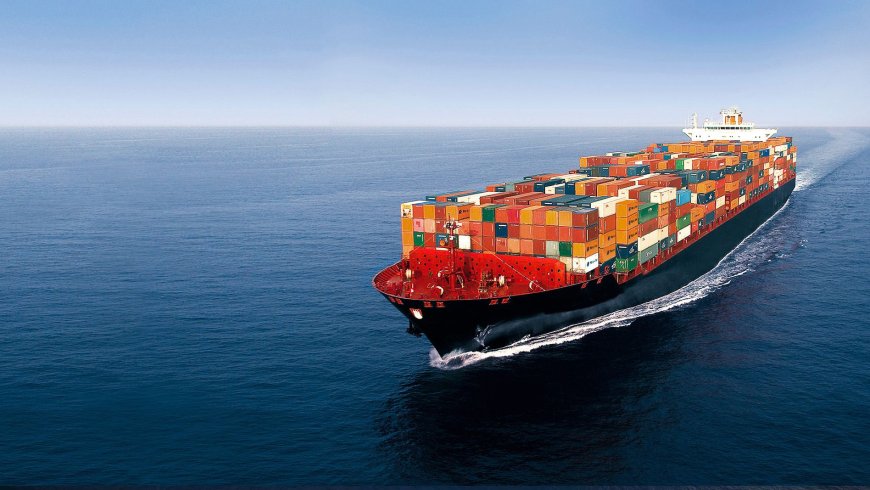In today’s interconnected world, international trade is essential for the movement of goods and services across borders. The rise of globalization and the rapid growth of e-commerce have led to an increased demand for efficient transportation methods. One of the most cost-effective and reliable modes of transportation for global trade is ocean freight. Ocean freight services have become the backbone of the shipping industry, facilitating the movement of large quantities of goods across vast distances. In this article, we will explore the role of ocean freight services, how they work, and why they are crucial to global commerce.
Understanding Ocean Freight Services
Ocean freight services refer to the transportation of goods via sea routes, typically using large cargo ships that carry various types of freight. This form of shipping is responsible for transporting a significant portion of goods around the world, including raw materials, manufactured products, and consumer goods. Unlike air freight, which is faster but more expensive, ocean freight is a more affordable option for businesses looking to move large volumes of goods across continents.
Ocean freight services are primarily used for bulk shipping, including heavy machinery, electronics, textiles, and even food products. These services are critical for industries that rely on the global supply chain, as they provide a reliable means of moving products from one country to another, often at lower costs than other transportation methods.
The Process of Shipping via Ocean Freight
The process of shipping goods through ocean freight involves several key steps, each of which requires careful planning and execution. The first step is booking cargo space on a container ship. This can be done through a freight forwarder or directly with shipping companies that offer ocean freight services. Once the cargo is booked, it is prepared for transport by loading it into containers. These containers are then placed onto large container ships that are equipped to carry various types of freight.
After the cargo is loaded onto the vessel, the ship begins its journey across the ocean. Depending on the distance and the shipping route, this journey can take anywhere from a few days to several weeks. Once the ship reaches its destination port, the cargo is offloaded and transported to its final destination, whether it be a warehouse, distribution center, or directly to the buyer.
Benefits of Ocean Freight Services
One of the most significant advantages of ocean freight is its cost-effectiveness. Shipping goods by sea is often far less expensive than other methods, such as air freight. This makes it an ideal choice for businesses that need to move large quantities of goods over long distances while keeping costs manageable. Additionally, ocean freight allows for the transportation of goods in large quantities, making it ideal for bulk shipments.
Ocean freight also offers a high degree of flexibility in terms of the types of goods that can be shipped. Whether it’s heavy machinery, chemicals, or perishable goods, ocean freight services can accommodate a wide range of cargo types. Specialized containers, such as refrigerated containers for perishable items, are available to ensure that goods arrive in the best possible condition.
Challenges in Ocean Freight Services
Despite the many benefits, there are also challenges associated with ocean freight services. One of the primary challenges is the time it takes for goods to reach their destination. Ocean freight is much slower than air freight, which can be a disadvantage for businesses that need to move goods quickly. Additionally, ocean freight is subject to weather conditions and other factors, such as piracy or political instability in certain regions, which can disrupt shipping schedules.
Port congestion is another challenge that can affect ocean freight services. As ports become more crowded, delays can occur in the unloading and loading of goods, leading to longer transit times. This can be particularly problematic for businesses that rely on just-in-time inventory systems, where delays can result in stock shortages and missed sales opportunities.
Environmental Impact of Ocean Freight
Another important consideration when discussing ocean freight services is the environmental impact of shipping. While ocean freight is generally considered more environmentally friendly than air freight, it still contributes to carbon emissions. Large container ships burn fossil fuels, which release greenhouse gases into the atmosphere. The shipping industry has made efforts to reduce its carbon footprint by adopting cleaner technologies and using alternative fuels, but more work needs to be done to minimize the environmental impact of ocean freight services.
The Future of Ocean Freight Services
As the global economy continues to evolve, so too does the ocean freight industry. Technological advancements, such as automated ships and blockchain-based supply chain solutions, are expected to play a significant role in improving the efficiency of ocean freight services. These innovations could reduce costs, improve transit times, and enhance the security of shipments.
Additionally, the growing focus on sustainability will likely drive further changes in the industry. With increasing pressure to reduce carbon emissions, the shipping industry is exploring new fuel alternatives, including biofuels and hydrogen. The shift towards greener practices will likely shape the future of ocean freight, making it more sustainable and efficient for businesses and consumers alike.
Conclusion
Ocean freight services play a crucial role in global trade, offering businesses a cost-effective and reliable method for transporting goods across vast distances. While there are challenges, such as longer transit times and environmental concerns, the benefits far outweigh the drawbacks. As the industry continues to evolve, ocean freight services will remain a vital component of the global supply chain, helping businesses connect with customers and suppliers around the world. Whether it’s raw materials or finished products, ocean freight will continue to be the backbone of international trade for years to come.


























